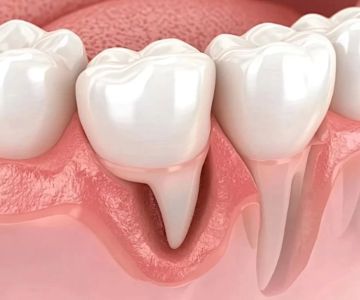How Long Does It Take for a Cavity to Form?
- 1 - Understanding How Cavities Form
- 2 - Factors Influencing Cavity Formation
- 3 - Signs of a Developing Cavity
- 4 - How to Protect Your Teeth from Cavities
- 5 - When to Visit the Dentist for Cavities
1 - Understanding How Cavities Form
Cavities, also known as dental caries, are areas of decay that form on your teeth. They are a result of the action of bacteria in your mouth, which feed on sugars from food and drink. Over time, these bacteria produce acids that eat away at tooth enamel, eventually leading to the formation of a cavity.
But how long does it actually take for a cavity to form? The answer depends on several factors, but in general, a cavity can start to form within six months to a year of regular exposure to sugary or acidic substances. If your teeth aren’t properly cleaned or if you don’t visit your dentist regularly, this process can speed up, and a small spot of enamel decay can quickly become a full-blown cavity.
2 - Factors Influencing Cavity Formation
The time it takes for a cavity to form varies based on several factors:
- Diet: Consuming sugary foods and drinks provides fuel for bacteria in your mouth, which can accelerate the formation of cavities.
- Oral Hygiene: The better you clean your teeth, the less time plaque and bacteria have to build up and form cavities.
- Saliva: Saliva helps to neutralize acids and wash away food particles. People with dry mouths may be more prone to cavities because they have less saliva to protect their teeth.
- Age: Younger people may have softer enamel that is more vulnerable to cavities, while older adults may have weakened teeth due to wear and tear.
These factors can influence how quickly bacteria can break down enamel and create a cavity. If you’re particularly vulnerable to cavities, you may need to be more proactive about your oral care.
3 - Signs of a Developing Cavity
Early-stage cavities often don’t show any symptoms, which is why it’s important to visit your dentist regularly. However, as the cavity progresses, you may notice some signs:
- Tooth Sensitivity: You might experience discomfort when consuming hot, cold, or sugary foods and drinks.
- Visible Holes or Pits: As the cavity progresses, you may notice small holes or pits in your teeth.
- Tooth Pain: More advanced cavities can cause persistent tooth pain, especially when chewing or biting.
If you notice any of these symptoms, it’s time to schedule an appointment with your dentist before the cavity worsens and leads to more serious dental issues.
4 - How to Protect Your Teeth from Cavities
Preventing cavities is far easier than treating them. Here are some essential steps to protect your teeth:
- Brush Twice a Day: Use fluoride toothpaste and brush your teeth thoroughly at least twice a day to remove plaque and bacteria.
- Floss Regularly: Flossing helps to remove food particles and plaque from between your teeth, where toothbrush bristles can’t reach.
- Limit Sugary Foods and Drinks: Reducing your intake of sugary and acidic foods helps prevent the bacteria that cause cavities from thriving.
- Use Mouthwash: An antimicrobial mouthwash can help reduce bacteria in your mouth.
- Visit Your Dentist: Regular dental checkups and cleanings are crucial to catching cavities early.
By following these preventive measures, you can significantly reduce the risk of cavities forming and keep your smile healthy.
5 - When to Visit the Dentist for Cavities
If you suspect you have a cavity, it’s crucial to schedule a dental checkup. Your dentist can evaluate the extent of the decay and recommend the best course of action. In some cases, cavities may be small enough to be treated with a filling, while larger cavities might require more extensive work, such as a crown or root canal.
Regular dental visits are key to preventing cavities from becoming a major issue. Early detection and treatment can save you time, money, and potential discomfort in the future.







 Westgate Dental Arts
Westgate Dental Arts Coventry Family Dental
Coventry Family Dental Familia Dental
Familia Dental Dr. Daniel S. Fife, DDS
Dr. Daniel S. Fife, DDS Dentistry At Suburban Square: Michael I. Wollock, DMD
Dentistry At Suburban Square: Michael I. Wollock, DMD Comfort Care Dental
Comfort Care Dental The Importance of Oral Health Education During Pregnancy for a Healthy Pregnancy
The Importance of Oral Health Education During Pregnancy for a Healthy Pregnancy Why Skipping Dental Checkups Can Lead to Bigger Oral Health Problems
Why Skipping Dental Checkups Can Lead to Bigger Oral Health Problems Advantages of Porcelain Dental Restorations
Advantages of Porcelain Dental Restorations Best Tips for Brushing Your Teeth Properly for Healthy Gums: Essential Techniques for Oral Health
Best Tips for Brushing Your Teeth Properly for Healthy Gums: Essential Techniques for Oral Health How Can Diabetes Cause Tooth and Gum Problems? Preventing and Managing Oral Health Issues
How Can Diabetes Cause Tooth and Gum Problems? Preventing and Managing Oral Health Issues Healthy Habits for Promoting Good Oral Health and Hygiene: Tips for a Healthy Smile
Healthy Habits for Promoting Good Oral Health and Hygiene: Tips for a Healthy Smile